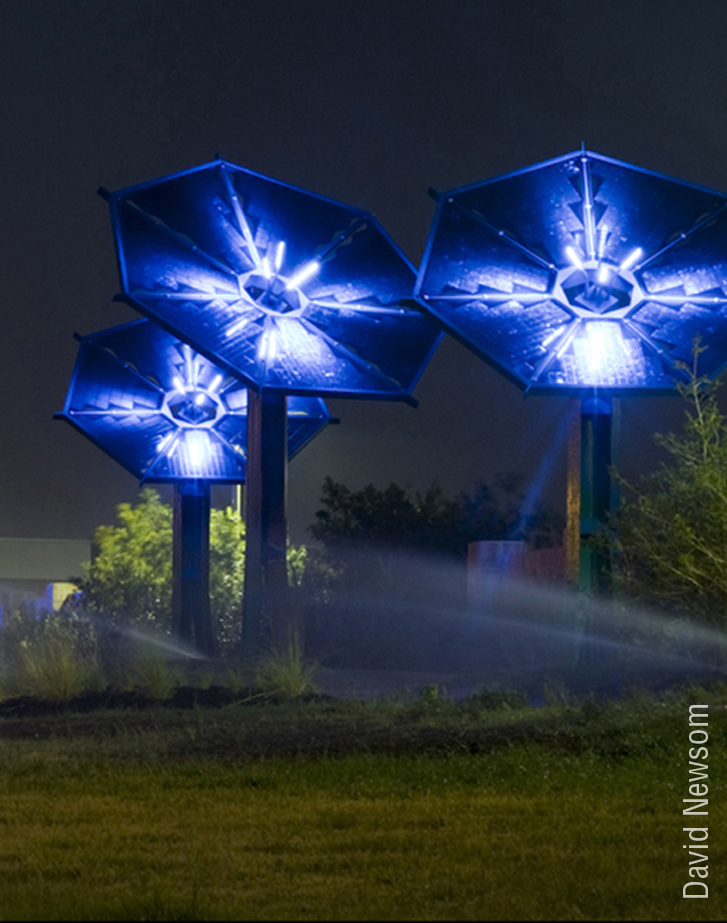Spectral trees populate Ghost Forest, Maya Lin’s new art installation.
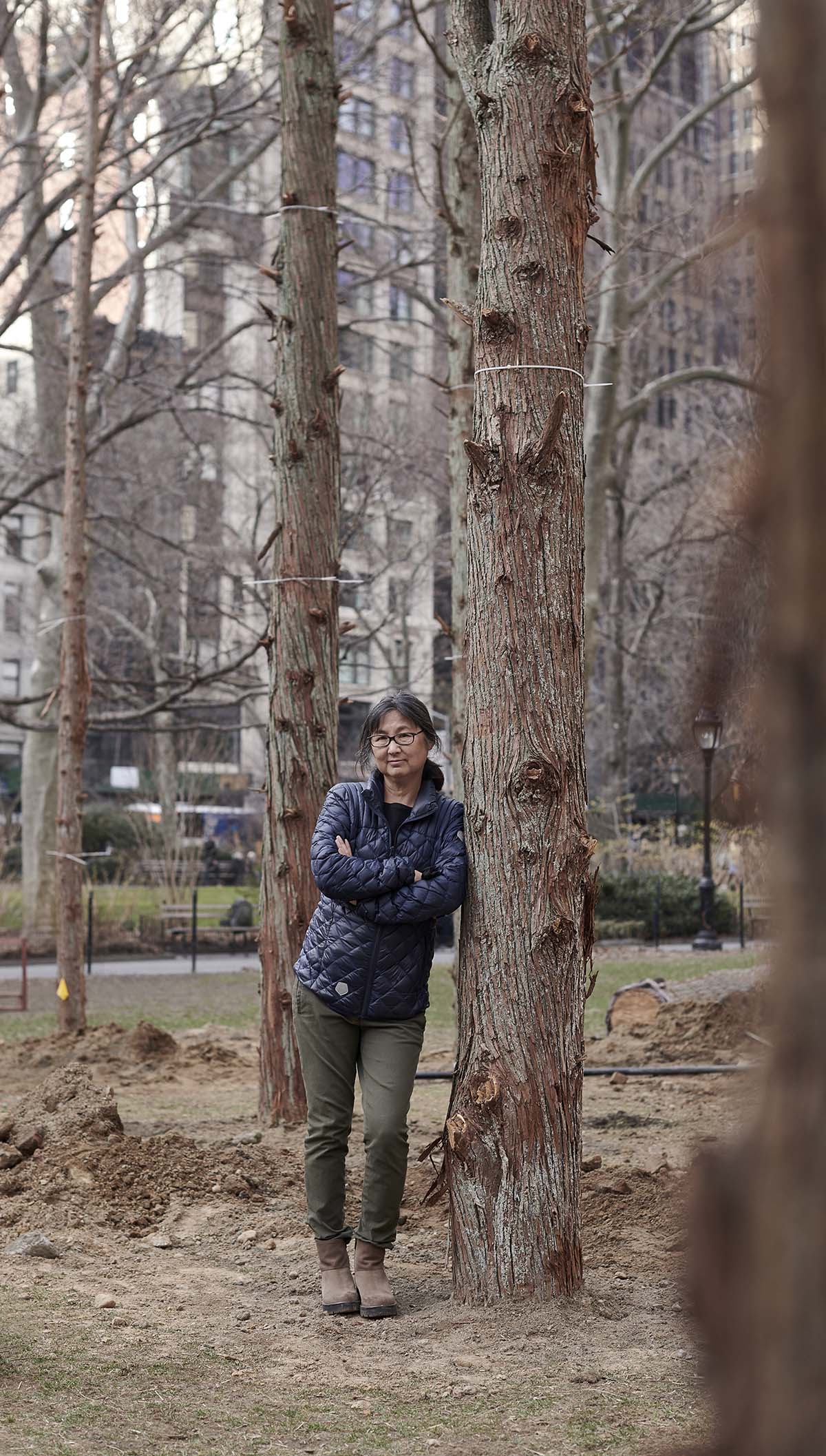
Maya Lin Within Ghost Forest, 2021. Photograph of installation. ©Maya Lin 2021. Courtesy of the artist and Madison Square Park Conservancy. Photo: Andy Romer.
The term “ghost forest” refers to a devastating – and increasingly widespread –phenomenon swallowing up vast tracts of the world’s coastal forests. As climate change causes sea levels to rise, salt water advances, replacing the freshwater that shoreline deciduous trees need to survive. Saltier water slowly poisons the trees, turning them into lifeless gray pillars.
In Lin’s installation, forty-nine dead Atlantic white cedars, victims of saltwater infiltration, tower amid Manhattan skyscrapers – stark cautions against inaction on climate change. Originally planned for summer 2020 (and postponed due to the COVID pandemic), the installation is now open for public viewing in NY’s Madison Square Park through November 14th, 2021.
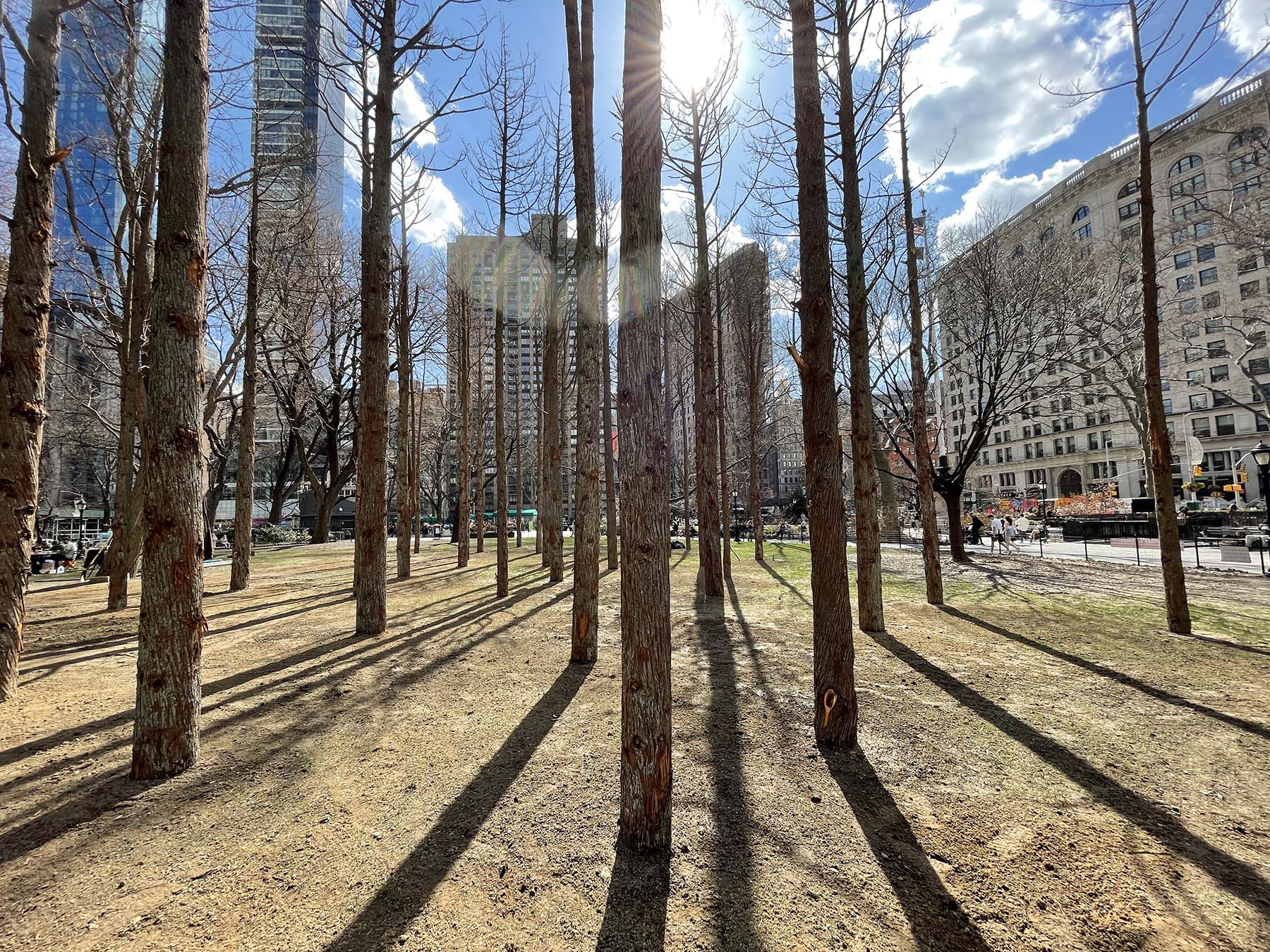
Maya Lin, Ghost Forest, 2021. Installation. ©Maya Lin 2021. Courtesy of the artist and Madison Square Park Conservancy. Photo: Maya Lin Studio.
The project began with Lin’s simple question: “How can I make you aware of things that are literally disappearing right before our eyes? Atlantic cedars used to be up and down the Atlantic seacoast. They were first cut down for building our cities.”
Her artistic response both educates and empowers visitors. Lin explains: “I don’t want to just wake you up to climate change.” Given that “we don’t have much time left,” she encourages visitors to contemplate nature-based solutions – changes to agriculture, forestry, ranching and land management practices – that “can absorb significant amounts of carbon emissions and protect biodiversity around the world.”
A series of public education programs accompany the installation. Visitors will also hear a soundscape – composed by Lin in collaboration with the Cornell Lab of Ornithology – of the calls and songs of animals (including a bear, a wolf, and a cougar) that used to roam Manhattan. Lin describes the effect as “gently haunting, a reminder of what was once here and now is not.”
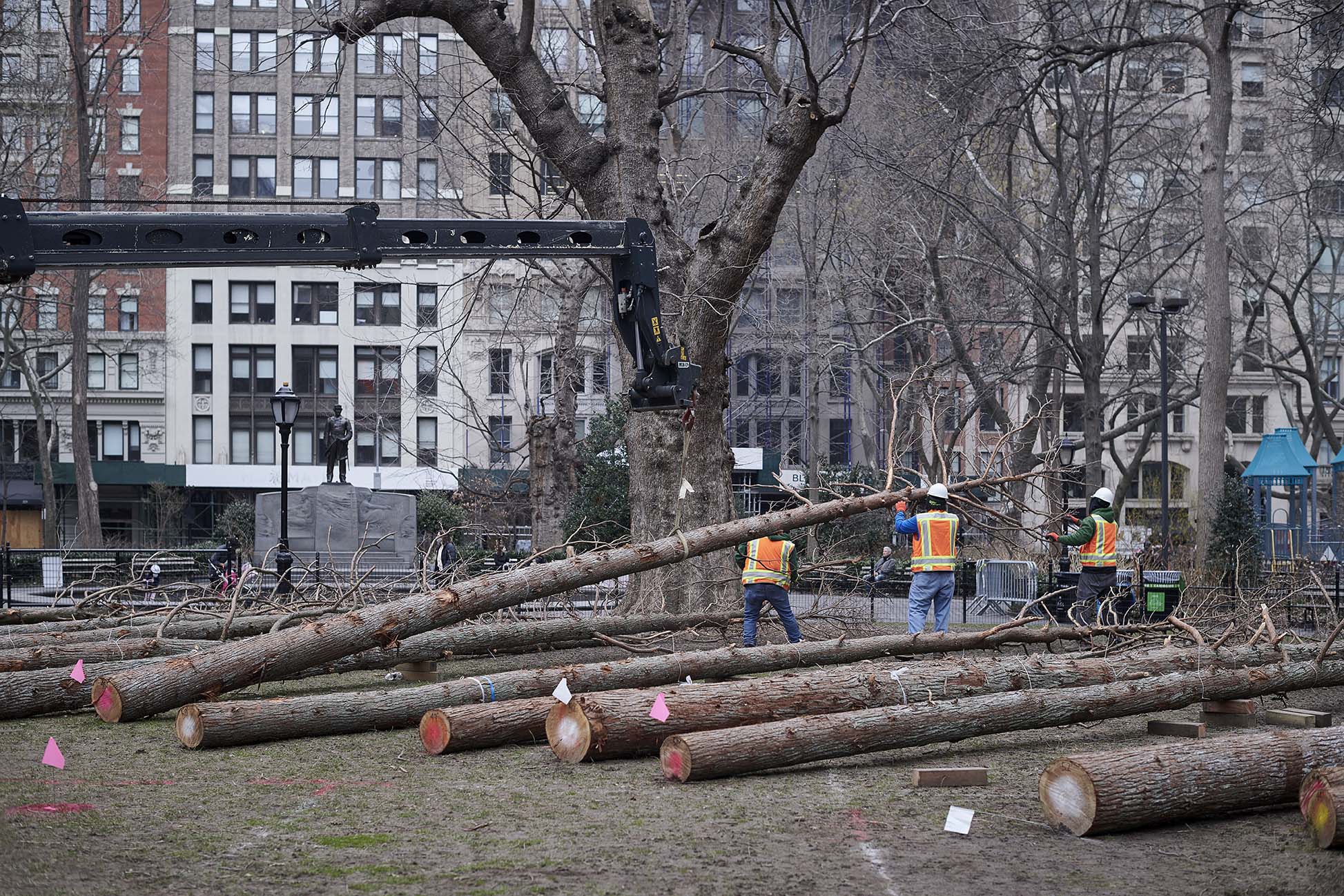
Maya Lin, Installation of Ghost Forest in process in Madison Square Park, 2021. ©Maya Lin 2021. Courtesy of the artist and Madison Square Park Conservancy. Photo: Andy Romer.
Lin carefully sourced the exhibition’s trees. All were slated for clearing as part of a restoration project on private lands in the New Jersey Pine Barrens. Removing the dead cedars allows light to penetrate the forest floor, facilitating the growth of new cedar saplings.
Lin also sought to minimize the project’s carbon footprint. As part of the exhibition, the artist and Madison Square Park Conservancy will collaborate with the Natural Areas Conservancy to plant 1,000 native trees and shrubs in public parks throughout the city’s five boroughs. Over a 10-year span, Lin estimates the new plantings will offset the project’s carbon emissions more than tenfold.
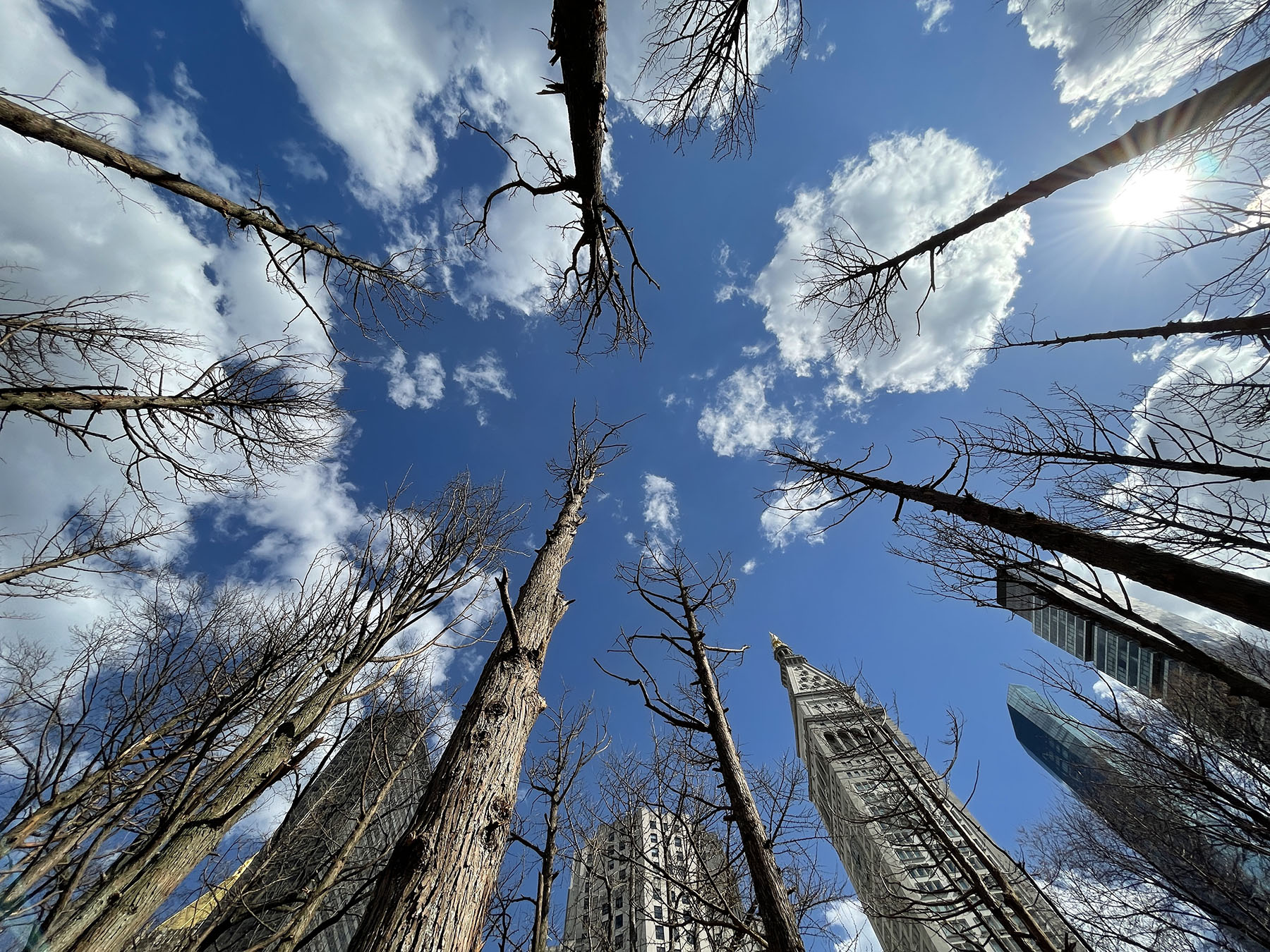
Maya Lin, Ghost Forest, 2021. Installation. ©Maya Lin 2021. Courtesy of the artist and Madison Square Park Conservancy. Photo: Maya Lin Studio.
That contribution to a sustainable future shows that, despite the grim visual, a strong message of hope underlies Ghost Forest. Lin looks to the past not to mourn what has been lost, but to challenge us “to frame a different future.” “Nature is resilient,” she observes. “If we give it a chance, it will come back.”

